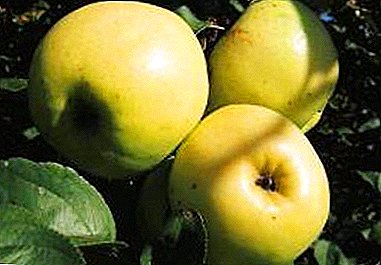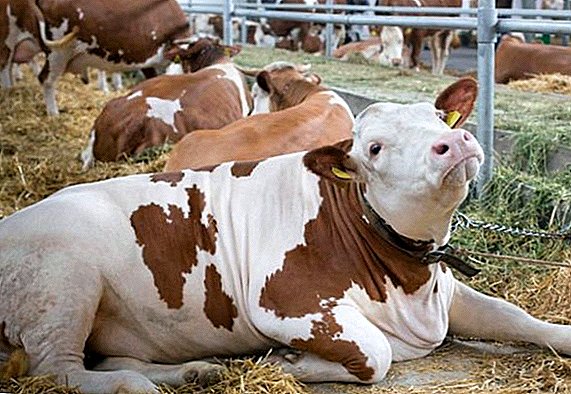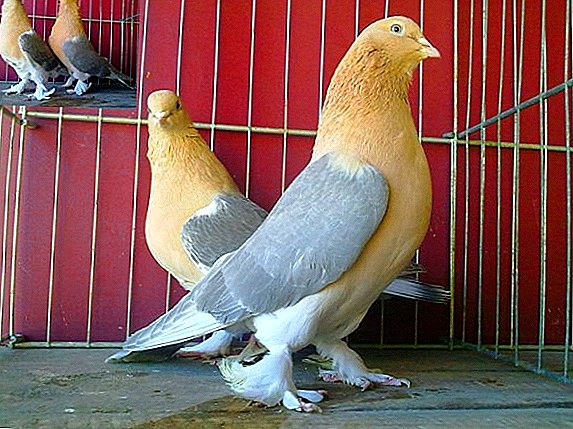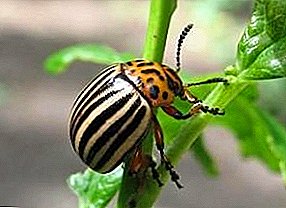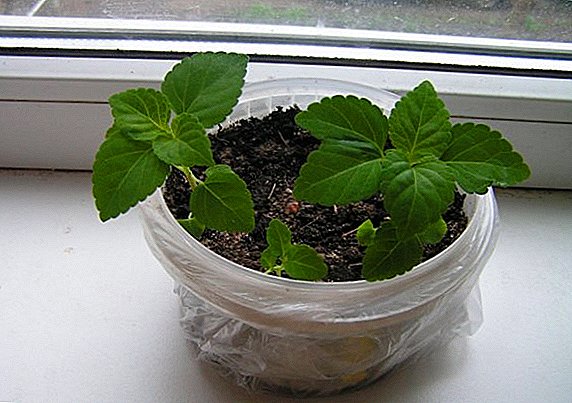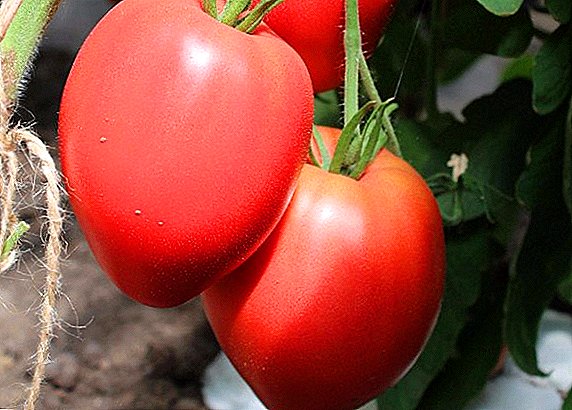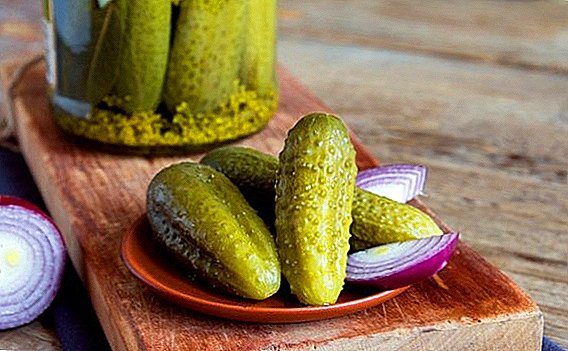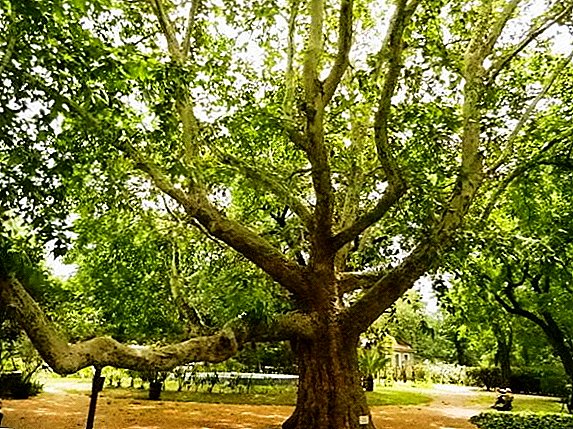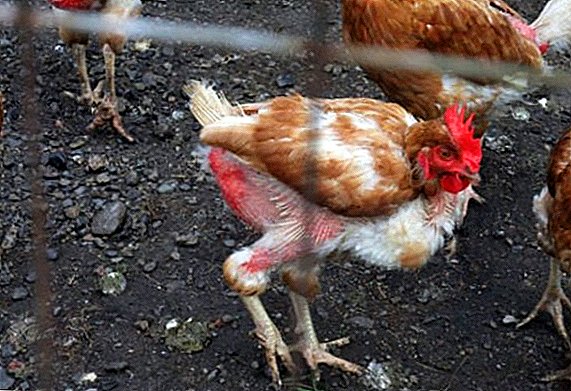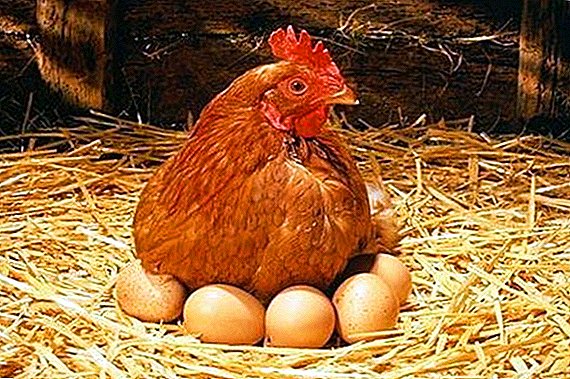 Before we consider the natural method of hatching chickens by hatching eggs, it should be said that contrary to the established opinion of amateur poultry farmers, there are no bad hens, there are only inappropriate conditions created by the owners. Let's study this process step by step, namely, what actions poultry farmers need to take in order to get a healthy and full brood of chicks, how a chick embryo is formed by hatching days, what to do after hatching.
Before we consider the natural method of hatching chickens by hatching eggs, it should be said that contrary to the established opinion of amateur poultry farmers, there are no bad hens, there are only inappropriate conditions created by the owners. Let's study this process step by step, namely, what actions poultry farmers need to take in order to get a healthy and full brood of chicks, how a chick embryo is formed by hatching days, what to do after hatching.
Preparatory process
If you listen to the recommendations of experienced poultry farmers engaged in breeding chickens, the most appropriate time period for successful consolidation of the result of this process is the end of spring or the first summer month. It was during this period that the so-called maternal sense, or the incubation instinct, was most developed in chickens.
Another favorable consequence of hatching chickens in warm weather is the full and rapid growth of chicks at this time of year, because natural lighting and indoor heating, as well as vitamin supplements in the form of greenery and insects for chicken, like nothing else have the best effect on the health of future young animals.
We advise you to read about how to wean the chicken to hatch eggs.
A special criterion for the potential incubation of birds should be their health and well-being: it is not allowed to choose sick, weak or flaccid chickens for the implementation of this responsible process.  As a hen it is necessary to choose a calm and balanced bird, the unstable nature of the hen can provoke the termination of the role of the hen by it. In order to avoid excitement and anxiety of the future hen, it is necessary to place it in the nest late in the evening or even at night.
As a hen it is necessary to choose a calm and balanced bird, the unstable nature of the hen can provoke the termination of the role of the hen by it. In order to avoid excitement and anxiety of the future hen, it is necessary to place it in the nest late in the evening or even at night.
Important! If you store eggs until the required amount is collected, then the maximum storage time is 7 days at a positive temperature of 10-15°C, at the same time during this period they must be periodically (every day) turned over.
Incubation eggs can only be obtained if the number of birds, male and female, is right, ideally these numbers should look like this: 1 rooster for 10-12 hens. 
Lining eggs are carefully selected for the following characteristics:
- they must be demolished by sexually mature (age of 7 months) and absolutely healthy, active layers;
- Mandatory criterion - the freshness of eggs, which is determined by the number of days past - no more than 6, as well as temperature conditions and indicators of the moisture content of the air in which they were stored - + 15-20 ° C and 75% humidity;
- dirty (with bleeding, for example) and damaged (cracks, rough shells, other defects) eggs are not lined;
- The dimensional characteristics of hatching eggs are medium in volume (small ones can be without a germ, and too large ones can have two yolks, the round and elongated shape also does not fit).
We recommend reading about why chickens carry small eggs and eggs without eggshells, how much an egg weighs, what categories of chicken eggs exist, how many eggs a chicken can carry.
In order to carry out the incubation process more accurately, experienced poultry farmers recommend purchasing an ovoscope, a small device for scanning eggs, which helps to detect any seemingly invisible deviations.  The optimal number of hatching eggs that must be placed under the chicken is determined by taking into account the size of the chicken, its breed and build. It is important that they all fit into one layer under the hen. The large size of the chicken allows you to put an average of 13-15 eggs under it.
The optimal number of hatching eggs that must be placed under the chicken is determined by taking into account the size of the chicken, its breed and build. It is important that they all fit into one layer under the hen. The large size of the chicken allows you to put an average of 13-15 eggs under it.
Signs of
Careful supervision of chickens will allow to determine among the total number that which, by its physical and behavioral characteristics, is ready to show its instinct and become the hen.
The hen’s obvious desire to become a hen or quiver can be identified by the following manifestations of her behavior:
- frequent stay and subsequent delay in the nest with an accompanying reluctance to leave it;
- making sounds that are popularly called “quacking” or “clucking”;
- self-pulling out of their own individual feathers and down, as well as the subsequent laying down of the potential incubation sites with these components;
- due to recent actions, the lower part of the abdomen becomes bare from the feather cover.

However, as a result of the determination of these characteristics of the hen, the poultry farmer should not immediately plant a quit on the eggs and wait for her to see them out. Sometimes it may be false signs, but in order to determine their truthfulness, the best method would be to lining artificial eggs, bought or created with your own hands, for the first couple of days.
If the maternal instinct of the cat is not sufficiently developed, it will soon cease to groan and leave the nest, and you don’t need a cuckoo chicken. If the bird successfully copes with the initial task, then you can safely lay real hatching eggs in a place for hatching.
Nest
Equipping the main place for hatching eggs, it is necessary to make it so that it is warm and cozy.  For the nest they take mainly such containers as baskets, deep wooden boxes with special holes for ventilation. To protect the quiver from the attacks of other animals, it would be advisable to make a shelter using the net.
For the nest they take mainly such containers as baskets, deep wooden boxes with special holes for ventilation. To protect the quiver from the attacks of other animals, it would be advisable to make a shelter using the net.
It is best of all to organize the nest location in a quiet and remote from the total number of hens area, it is better if it is separate from other birds, animals, people. The main condition is the possibility of free and spacious placement of the hen, but the dimensional characteristics should not be huge, the best values are 55 cm by 35 cm.
Read more about how to make a nest for laying hens.
The bottom of the hen place is filled with turf, and then evenly covered with fresh straw and down, forming a bowl shape for future eggs, while very carefully filling the edges: this is provided in order to avoid rolling eggs out of chicken.  To form a nest, you can take a box and lay out materials for its formation on the side, while covering the top with a hanging curtain, divided into two parts, so that the chicken can easily leave the nest during feeding and walking, as well as return there in a timely manner.
To form a nest, you can take a box and lay out materials for its formation on the side, while covering the top with a hanging curtain, divided into two parts, so that the chicken can easily leave the nest during feeding and walking, as well as return there in a timely manner.
If rats are often visited on your chicken farm, experienced poultry farmers recommend making mounted nests or, in the absence of certain conditions, place them on a slight elevation.
Did you know? A rooster does not always need chickens in order to carry an egg. Male birds are necessary for the fertilization process.
The method of forced incubation of eggs is used by those poultry farmers who want to hatch chickens, but a potentially responsible hen is not found in the total number of chickens. It is necessary to place a nest in the shady area, put deceptive testicles into it and plant a one-year-old chicken on it, a long time not rushing laying hen, which already had experience of chickens incubation.  A prerequisite is to cover the nest with a lid, basket or rake box. After that, the chicken is left alone for a period of about four to five days, letting it go outside to eat food and fluids twice a day.
A prerequisite is to cover the nest with a lid, basket or rake box. After that, the chicken is left alone for a period of about four to five days, letting it go outside to eat food and fluids twice a day.
A sign of success of the actions done is the publication of the inherent hen sounds of a hen. And only then you can perform all the above actions, but with real reproductive.
It will be useful for poultry farmers to read about whether a rooster is needed for chickens to carry eggs, when young pullets begin to rush, why chickens do not carry eggs and peck eggs, what vitamins chickens need for laying eggs, and how to increase egg production in chickens in winter.
All the above actions depend on the activity of the poultry farmer, the layer itself will further streamline the nest: the owner will only need to do an inspection and do the cleaning of the nest on time.
Hatching
The process of brooding or incubation is the natural warming of the eggs by the chicken with the help of the temperature of its body.  In the process of brooding, new and fresh eggs cannot be laid, because the developmental period of chickens will differ, and after the first chicks appear, the hen may simply leave the nest, not having “finished the last”.
In the process of brooding, new and fresh eggs cannot be laid, because the developmental period of chickens will differ, and after the first chicks appear, the hen may simply leave the nest, not having “finished the last”.
The body temperature of quota varies between + 37-40 ° C. In order for the testicles to be heated equally, they must be turned over, which the hen does independently, as a rule, up to 40-50 times a day.
Important! In the event that ectoparasites (for example, ticks) are found on the chicken's body, it is imperative that the poultry outer cover be cleaned with the ash bath with the accompanying treatment of feathers with special antiparasitic veterinary drugs.
In the first day and the last few days of laying the hen it is better not to disturb: excessive anxiety can cause her to leave the nest. Next, you need to control the descent of the hen from the nest.  Daily walks to fresh air in order to eat, drink and buy, just need a chicken for normal life and the duration should be 15-20 minutes twice a day.
Daily walks to fresh air in order to eat, drink and buy, just need a chicken for normal life and the duration should be 15-20 minutes twice a day.
In case of her unwillingness to leave the nest, the owner must apply coercive measures: carefully remove from the hen place, covering access to the nest so that the bird does not decide to suddenly return, feed and drink.
During the absence of the hen it is necessary to make an inspection of the eggs for the presence among the total number of crushed or damaged, which are removed, and also to carefully change the litter and in order to save heat to cover whole and intact reproductions.
During the incubation, the chicken spends a lot of its energy, the proper replenishment of which has a positive effect on both its general well-being and on the body temperature required for warming the eggs.  In order for the result of hatching eggs to be successful, you need to create the right diet for your chicken, which must include:
In order for the result of hatching eggs to be successful, you need to create the right diet for your chicken, which must include:
- sunflower seeds;
- maize or corn;
- cereals (wheat);
- clean water that needs to be replaced regularly.
We advise you to read on how to give bran, meat and bone meal, grass, live food, fish oil and yeast to chickens, and whether it is possible to give bread and foam plastic to chickens.
In order for the brood to have round-the-clock access to food and liquids, you can install a feeding trough and a drinker near the nest: then, when the chicken wants it, it will temporarily leave the nest to satisfy its needs.
A mandatory preventive action in the period of incubation is repeated inspection of feathers and outer cover of quotas for the presence of parasites or foreign objects for their timely elimination.  Among the poultry farmers there is a perception that chickens themselves determine not only the freshness of eggs, but also the viability of future chicks, and yet experts advise: if one of the eggs is thrown away, there is no need to hurry to throw it out, it is better to check it by scanning the ovoscope. Perhaps it happened by chance, and the embryo develops in a full-fledged way.
Among the poultry farmers there is a perception that chickens themselves determine not only the freshness of eggs, but also the viability of future chicks, and yet experts advise: if one of the eggs is thrown away, there is no need to hurry to throw it out, it is better to check it by scanning the ovoscope. Perhaps it happened by chance, and the embryo develops in a full-fledged way.
Important! Chickens are not squeamish in terms of hatching of foreign eggs: they can be put and duck, turkey or goose reproduce
Stages of development
The development of a chicken embryo lasts approximately 21 days, i.e. 3 weeks. During the period of natural warming of eggs, it is necessary to control the rudimentary formation of chicks several times with the help of ovoscopic research.
Video: chicken embryonic development This form of studying the process is necessary in order to see the quality of embryos, their survival instinct, and also to determine whether the correct incubation conditions are created by the host.
If the embryo develops slowly, its location will be closer to the shell. The vessels of the dead embryo have dark-colored vessels, sometimes ring-shaped, and unfertilized eggs look completely light and translucent.
These inspections are used in the poultry industry not only to monitor the development process, but also to remove defective testicles from under the hen in time and thus give a chance to be born to stronger chickens: all eggs corresponding to the parameters are placed in the very center of the nest.
First day
On the first day of hatching eggs in the yolk a compaction is formed, called the blastodis, from which the future chick develops.  This formation has the characteristic property to move when turning or moving the testicle, always being at the same time at the highest point of the yolk mass - closer to heat and light.
This formation has the characteristic property to move when turning or moving the testicle, always being at the same time at the highest point of the yolk mass - closer to heat and light.
Did you know? Birds are the only representatives of the animal world that have two larynxes (the upper one, which is observed in all mammals, and the lower one, which no one else has). That is why they sing so well: thanks to the functionality of the lower larynx, they manage to diversify sound effects so much that it is a pleasure to listen to them.Under prolonged heat and light exposure in incubation conditions, the germinal disc cells begin to divide and grow, gradually increasing to 5 mm. In addition, thin blood vessels begin to grow from the embryonic disc.

Second day
On the second day, the formation of the heart muscle takes place, and from the primary cells an amnion is formed - a specific envelope with a water liquid, which will later completely surround the body of the fetus and will protect it from potential shocks.
Did you know? The expression "water like a goose" appeared for a reason, but due to a real fact - the presence of a fatty film on the surface of the goose feathers, the water from which simply rolls without even wetting the down of these birds.
Following the formation of the amnion, an allantois is built - a sac, the walls of which tightly adhere to the membrane and surround the amnion with the embryo. It is necessary for the gas exchange of the embryo with the environment. 
Third to fourth days
On the third day, the head of the embryo is separated from the blastoderm, the borders of the amnion are completely closed. By the fourth day, allantois extends beyond the body of the embryo, creating a specific pocket covered with blood arteries, due to which it becomes clearly visible.
Find out what to do if a chicken cannot hatch itself.
At the same time, the amniotic sac is completely filled with liquid and envelops the fetus in order to separate it from the yolk, turn it in the other direction and form a more independent formation. During this daily period, the rudiments of wings and legs of the future nestling are formed, and the brain is created and the eye pigments are pigmented. The length of the fetus reaches 8 mm. 
Fifth day
On the fifth day, the embryo already clearly shows the rudiments of the elbow and knee joints and the beak begins to form. Eyes at the same time increase, and the neck is bent. It must be said that now the allantoic bag fully fulfills its main function for the embryo, which the blood vessels initially performed - it serves as a respiratory organ. The embryo length reaches 17 mm.
Sixth to eighth days
In the period from the sixth to the eighth day, the first feathers form in the future full-fledged chicken. The eye is completely pigmented, eyelids and jaws are formed, legs overtake wings in length, grooves on the extremities are noticeable. The head at the same time reaches a significant size with a simultaneous increase in the size of the body, the length of the fetus reaches 20 mm. 
Ninth day
After eight days of incubation during inspection of the hatching egg with the help of an ovoscope, you can see that the embryo finally becomes like a bird: the neck acquires the length of this animal, claws grow on its legs, and the chicken can open its beak.
Important! When placing several nests in one poultry house, it is necessary to take into account the fact that they must be at a significant distance with a certain isolation from each other in order to avoid scuffles in the herd due to confusion in the hens.
Tenth-thirteenth days
During the period of the tenth or thirteenth day, the body of the nestling is covered with feather papillae, the eyelid completely covers the eye, the ridge of the comb is visible, with characteristic teeth, the first down appears along the back, on the head and hips. Fetal length - 43 mm. 
End of second week
By the end of the second week, the chick has already formed a tubercle on its beak (this is necessary so that it has the opportunity to independently get out of the shell, breaking it), the chicken changes its position, turning its head to the blunt end of the egg.
He stays here for another week until the body is completely covered with feathers. Природой предусмотрено, что использовав белок, молодой организм цыплёнка приступает к питанию желтком, в то время как количество жидкости в амниотической оболочке и аллантоисе заметно снижается.
Вывод цыплят
Когда приходит назначенное время, цыпленок самостоятельно пробивает пустую воздушную часть яйца на его тупом конце и делает первый вдох лёгкими. Глаза у него наряду с этим приоткрыты, а общая длина тела достигает 80 мм.  Since the yolk was completely drawn by the body of the chick into the abdominal cavity during the last days of intrauterine development, this will be his first food after birth. Usually naklevyvanie and the subsequent appearance of the chickens falls on 19-21 days.
Since the yolk was completely drawn by the body of the chick into the abdominal cavity during the last days of intrauterine development, this will be his first food after birth. Usually naklevyvanie and the subsequent appearance of the chickens falls on 19-21 days.
It will be helpful for you to read about how to determine the sex of a chicken, how to transport day-old chickens, why chickens peck at each other, how to use an infrared lamp to heat chickens, and also how to properly walk chickens.
It should, however, take into account the fact that these dates may vary depending on the conditions of preservation of hatching eggs. It is necessary to carefully monitor the course of this process, because with the first hatching of chickens, the hen may suddenly drop the nest. That is why you need to hatch already born to the chicks and wait until the chicken feeds the last.  Algorithm of actions after hatching not all chickens:
Algorithm of actions after hatching not all chickens:
- a few hours after birth, the chicks should dry out under the mother;
- then it is necessary to seed the chicks in a separate box without a top or a basket with a bottom covered with delicate matter or soft paper;
- Since newborn chicks are very sensitive to temperature changes and drafts, the temperature of their maintenance in a new house should vary between + 26-30C: for this you can heat them with a lamp or put an electric heater on the bottom, covering it with a warm blanket.
It will be interesting for you to read about how to feed chickens from the first days of life, what you can give to chickens, as well as how to give them greens.
It is possible to produce young animals under the chicken only after the complete termination of the hatching, and this can be done not only with chickens, but also with the children of other avian relatives. Favorable time for this is evening, combined with the process of receiving feed by the mother. The number of chicks that mom-chicken can drive reaches 25.
Video: feeding, drinking and keeping chickens in the first days of life At the same time, the owner needs to carry out timely feeding, water supply, as well as the protection of tusks and chickens from predators and bad weather conditions. The initial diet for babies consists of millet and crushed boiled eggs, water or fresh broth from rose hips / chamomile.
Thus, after reading this article, you learned that incubation is the most important way to increase the number of chickens on an individual bird farm.
Experienced poultry farmers know that the same hen can be used several times for hatching eggs, and yet they advise that this can be done only for individual purposes, and those who are engaged in industrial poultry farming of egg breeds should be better purchased an incubator to save their health. their domestic birds.
Reviews from the network




